
The Truth About Drinking Bottled Water
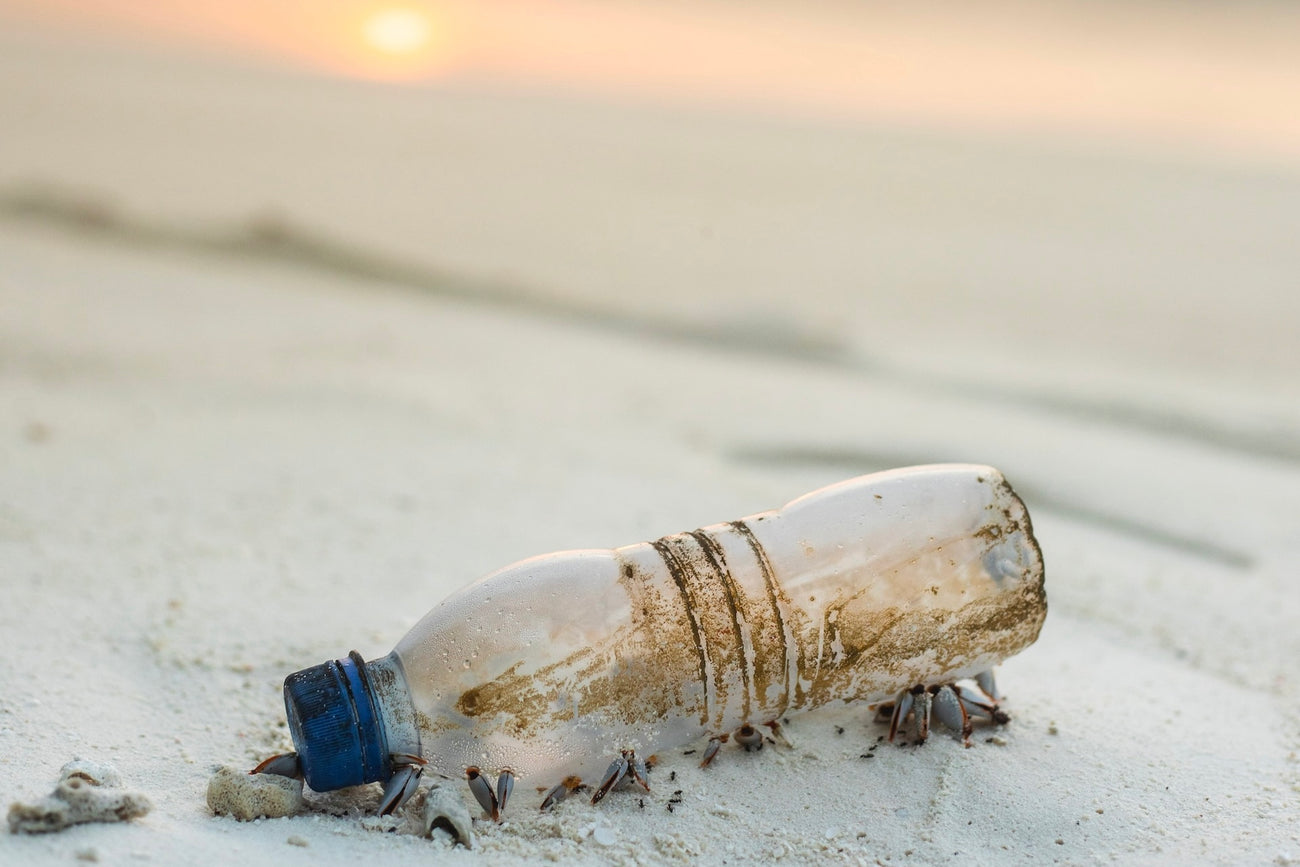
In this era of heightened environmental consciousness, the notion of 'sustainability' holds even greater significance, particularly with regard to our drinking water. The manner in which we obtain, consume, and recycle our water supply has a profound impact on the health of our planet.
At Soda Sense, we firmly uphold the importance of sustainable practices in all aspects of our operations, including our CO2 refill and exchange service. Let us now delve into the intricacies of sustainability within the realm of water.
What's the Most Sustainable Way To Drink Water?

Opting for reusable water containers filled with tap water is the most sustainable way to enjoy still water. By choosing this method whenever possible, we eliminate the need for disposable plastic bottles and reduce the carbon footprint associated with transporting bottled water. It's a simple yet impactful choice that promotes environmental consciousness and helps protect our planet.
Learn more about our sustainable CO2 Refill ClubWhich Mode of Drinking Water Has the Most Negative Impact on the Environment?
Single-use plastic bottles arguably have the most negative impact on the environment when it comes to modes of drinking water. These bottles contribute significantly to plastic pollution due to their high production rates and low recycling efficiency.
The production process is also resource-intensive, requiring large amounts of fossil fuels and water. Once disposed of, these bottles can take up to 450 years to decompose, leading to detrimental effects on marine life and ecosystems. In contrast, methods like using refillable water containers have a much lower environmental footprint, emphasizing the importance of sustainable drinking water choices.
Consuming Water Isn't as Eco-Friendly As You Think
As we aspire to be mindful consumers, it is crucial to acknowledge the environmental consequences of our water consumption habits. In this segment, we will explore in greater depth how specific approaches to water consumption can negatively impact our planet.
The Hidden Costs of Bottled Water
Bottled water is a convenience that comes at a high environmental cost. The production process consumes significant amounts of energy, starting from the extraction of raw materials to the bottling process and transportation. Moreover, the plastic used in these bottles often ends up in landfills or the ocean, contributing to the global plastic waste problem. Turning to tap water in reusable containers can help mitigate these detrimental effects.
To put it into perspective, the magnitude of plastic bottle waste is staggering. According to a report by The Guardian, globally, we consume about a million plastic bottles per minute, and this statistic is projected to increase by 20% by 2021. This adds up to approximately 480 billion plastic bottles sold annually, the majority of which end up in our landfills and oceans, instead of the recycling bin. These figures underscore the urgency of adopting more sustainable water-drinking habits.
Related Read: Canned Seltzer Water vs Soda Machines: Which is More Affordable?
The Carbon Footprint of Mainstream Carbonated Drinks
Carbonated drinks require carbon dioxide (CO2). The mainstream production of CO2 involves the burning of fossil fuels, which contributes to greenhouse gas emissions and accelerates climate change. Many large brands seen in stores are participating in these greenhouse emissions through their production of carbonated beverages.
However, at Soda Sense, we source our CO2 from renewable resources within the agricultural industry, ensuring our carbon footprint does not add unnecessary CO2 gas to the atmosphere. By purchasing a home soda maker and refilling your CO2 canisters through our Refill Club, you are actively supporting sustainable practices and reducing your carbon footprint.
The Hidden Impacts of Imported Water
Imported store-bought water, whether still or sparkling, has a hidden environmental cost - carbon emissions from transportation. These emissions contribute to global warming and climate change. By opting for locally sourced water and making sparkling water at home, we can drastically reduce these transportation-related carbon emissions.
The Carbon Footprint of Bottled Water

The convenience and perceived purity of bottled water have made it a popular choice for many, but this convenience comes at a significant environmental cost. The production of bottled water involves multiple stages, each contributing to its carbon footprint. Initially, the extraction and transportation of raw materials used in manufacturing plastic bottles emit greenhouse gases. Following this, the process of making plastic bottles from these raw materials, called polymerization, is energy-intensive and utilizes fossil fuels.
Once filled with water, these bottles require additional energy for refrigeration during storage and transportation, often over long distances, which again contributes to CO2 emissions. Notably, a significant proportion of these bottles are not recycled, ending up in landfills or the ocean, causing further environmental harm.
In contrast, opting for tap water or home carbonated water, especially when served in reusable bottles, significantly reduces these environmental impacts. Home soda makers, for instance, allow you to enjoy carbonated drinks without contributing to the waste and emissions associated with bottled beverages. By choosing reusable and refillable options, we can enjoy our beverages responsibly and sustainably.
The Role of Recycling in Sustainable Water Consumption
Recycling plays a crucial role in sustainable water consumption, particularly when it comes to items like plastic water bottles and CO2 canisters. By recycling these items, we prevent them from ending up in landfills or polluting our oceans, and we also reduce the need for the production of new materials. This not only conserves natural resources but also significantly reduces energy consumption and greenhouse gas emissions.
Soda Sense encourages and facilitates recycling to the greatest extent possible. We have established a CO2 Refill Club to encourage users to recycle their CO2 canisters. Whenever a canister is empty, you can send it to us for refilling. We refill and reuse all canisters that are sent to us, no matter the brand -- ensuring that each canister is reused multiple times. This approach reduces the need for manufacturing new canisters, which in turn saves energy and raw materials.
However, the role of recycling extends beyond just the canisters. We must also consider the recycling of the devices used to carbonate the water. The longevity of these devices is critical for reducing waste and promoting sustainability. At Soda Sense, we are committed to providing durable, long-lasting CO2 canisters to minimize waste. By choosing our canisters, you are not only investing in the quality of your sparkling water but also contributing to a more sustainable future.
Related Read: 5 Surprising Uses for Sparkling Water
Cans vs Bottles: Which is More Eco-Friendly
When comparing the environmental impacts of cans versus bottles, various factors come into play. Aluminum cans are generally seen as more eco-friendly than plastic bottles, primarily because they are often made with a high percentage of recycled content, and aluminum is easier and more efficient to recycle than plastic. However, the process of extracting and refining the bauxite ore used to produce new aluminum is energy-intensive and environmentally damaging. On the other hand, plastic bottles require petroleum for their production and, due to low recycling rates and the slow rate of degradation, often end up in landfills or oceans contributing to pollution.
Glass bottles, while reusable and recyclable, are heavier and require more energy to transport, which can increase their carbon footprint. Nonetheless, the reuse potential of glass bottles makes them a sound environmental choice if managed correctly.
In the end, the most sustainable option is to eliminate single-use items altogether. Utilizing a reusable water bottle and a home soda maker can drastically reduce the environmental impacts associated with both cans and bottles, by cutting down on waste and lowering carbon emissions associated with the production and transportation of these items.
The Lifecycle of a Bottle of Water
The lifecycle of a plastic water bottle begins with the extraction of raw materials. The main ingredient of plastic bottles, polyethylene terephthalate (PET), is derived from crude oil and natural gas. The extraction of these fossil fuels involves drilling wells or mining, activities that have significant environmental impacts, including habitat destruction, water contamination, and contribution to climate change through the release of greenhouse gases.
The raw materials are then transported to a refinery, where they are processed into PET. This refining process is energy-intensive and generates more greenhouse gas emissions. Furthermore, numerous toxic by-products are produced, which, if improperly managed, can contaminate the environment and pose risks to human health.
Next, the PET is transported to a manufacturing location, where it is molded into plastic bottles. This molding process is also energy-intensive and generates additional greenhouse gas emissions. Water is also extensively used during the cooling phase of the molding process, contributing to water scarcity issues in many parts of the world.
Once the bottles are formed, they are filled with water. This water is often sourced from public water supplies, leading to the misperception that bottled water is nothing more than expensive tap water. The water is treated and purified before being bottled, which involves additional energy use.
After the bottles are filled and sealed, they are shipped to retail outlets. The transportation of bottled water involves significant energy use and contributes to air pollution and climate change. Bottled water often travels long distances, sometimes across entire continents, to reach the consumer.
Once consumed, the plastic bottle ideally enters the recycling stream. However, only a small percentage of plastic bottles are actually recycled. Many end up in landfills or, worse, in the ocean, where they contribute to the growing problem of plastic pollution. Over time, these bottles break down into microplastics, which can be ingested by wildlife and make their way up the food chain, impacting both ecosystems and human health.
In summary, the lifecycle of a plastic water bottle involves significant environmental costs, including the depletion of fossil fuels, greenhouse gas emissions, water consumption, and plastic pollution. By contrast, using a reusable bottle filled with tap water or using Soda Sense's CO2 refills for carbonated water, drastically reduces these environmental impacts. As consumers, we have the power to choose more sustainable alternatives and contribute to the preservation of our planet.
Is Tap Water Environmentally Friendly?
Yes, tap water is environmentally friendly. Compared to bottled water, tap water uses less energy in its source extraction, processing, and distribution. Additionally, it does not contribute to plastic waste, a major environmental concern associated with bottled water. However, the environmental friendliness of tap water can vary depending on the local water treatment practices. It's always a good idea to understand your local water supply to make the most sustainable choices. By coupling tap water consumption with a home soda maker and Soda Sense's CO2 canisters, you can enjoy your sparkling water in an eco-friendly way.
But, Is Filtered Water Eco-Friendly?
Indeed, filtered water can be considered eco-friendly, yet its environmental impact depends largely on the type of filtration system used. The use of water filter systems reduces the demand for bottled water, consequently decreasing plastic waste and energy consumption associated with its production and transportation. However, it's important to consider the lifecycle of the filter itself. Some filtering systems use cartridges or components that need regular replacement. If these are not properly disposed of or recycled, they could contribute to waste.
The most sustainable water filters are those designed with longevity and minimal waste in mind. Some models feature recyclable or compostable filter components and have been designed to last for years without replacement. Choosing such a system ensures you're not contributing to landfill waste while still enjoying clean, safe water.
Moreover, coupling a sustainable water filter system with a home soda maker and Soda Sense's CO2 Refills allows for convenient, environmentally friendly access to sparkling water, all while minimizing environmental impact. By making conscious choices about our water consumption habits, we can contribute to a healthier planet while enjoying our favorite beverages.
Making Sparkling Water At Home: A Sustainable Choice
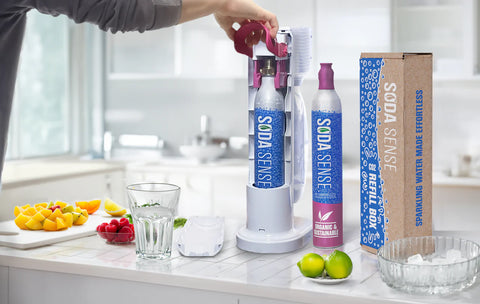
Making your own sparkling water at home is a practical, economical, and eco-friendly alternative to purchasing carbonated water or seltzer cans from the store. By adopting this practice, you not only reduce waste associated with single-use plastic bottles and aluminum cans but also cut down on the carbon emissions stemming from the production and transportation of these items. Here's a simple step-by-step guide on how you can make sparkling water at home using a soda maker:
- Set Up Your Soda Maker: Start by assembling your soda maker according to the manufacturer's instructions. This generally involves attaching the CO2 canister to the machine, whether it's a Threaded canister or a Quick Connect canister. With Soda Sense, you can rest assured knowing that the CO2 you're using is organic and sustainably sourced.
- Fill the Bottle with Tap Water: Next, fill the reusable bottle provided with your soda maker with tap water. It's recommended that you use cold water as it carbonates better. Ensure you fill up to the line indicated on the bottle to avoid overflows during the carbonation process.
- Carbonate Your Water: Attach the filled bottle to the soda maker. Depending on your particular model, you may need to screw it in place or lock it using a lever. Once the bottle is secured, press the carbonation button on top of the machine a few times until you hear a buzz, indicating that the water has been carbonated. Some soda makers allow you to customize the level of fizz based on your preference.
And voila! You now have a bottle of fresh, bubbly, homemade sparkling water. With a soda maker in your kitchen, you can enjoy sparkling water whenever you want, reducing both your carbon footprint and your grocery bill. Plus, you can experiment with different flavors to create your own custom seltzers. Remember, every small step toward sustainability contributes to a healthier planet!
Your Role in Water Sustainability
We've traversed a significant journey in understanding the true meaning of sustainability when it comes to our drinking water choices. We've discovered that bottled water, while convenient, has a non-negligible environmental footprint due to the energy used in its production, and distribution, and the issue of plastic waste. Tap water, on the other hand, stands as an environmentally friendly choice, with its eco-friendliness dependent on local water treatment practices. Adding to that, the eco-credentials of filtered water hinge on the type of filtration system used.
A standout sustainable alternative is making your own sparkling water at home with a soda maker and a trustworthy source of organic CO2, like Soda Sense. This practice curbs waste associated with single-use plastic bottles and aluminum cans while cutting down on carbon emissions from production and transportation. It's a testament that every little step we take towards sustainability counts. With this knowledge, we can make more informed choices about our water consumption habits, contributing to a healthier planet while enjoying our favorite beverages. Remember, sustainability begins with simple, conscious choices, and your journey towards it, starts in your own home.
Recommended reading
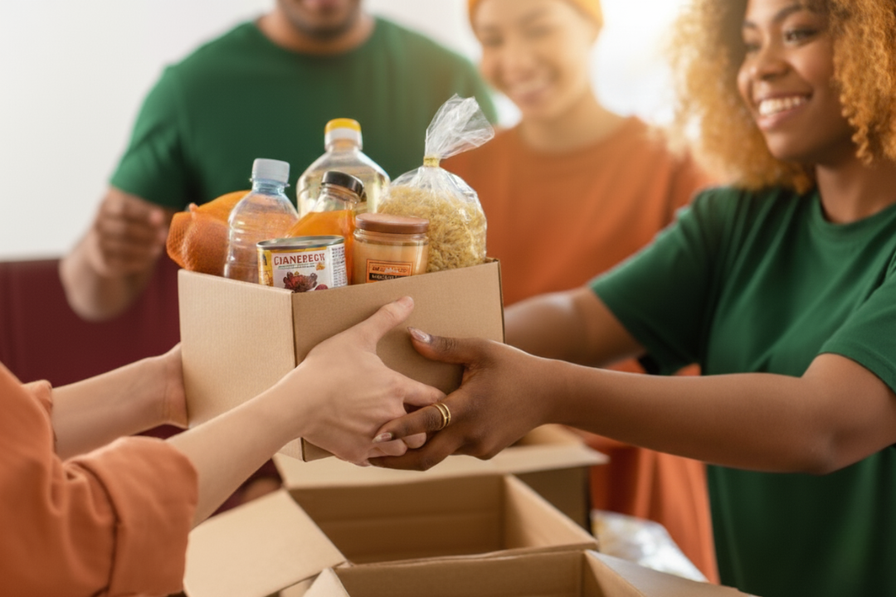
How to Give Back During Thanksgiving 2025
Key takeaways Thanksgiving is a time to express gratitude and share with those in need. From volunteering at local shelters to donating food and essentials, there are numerous ways to give back to...
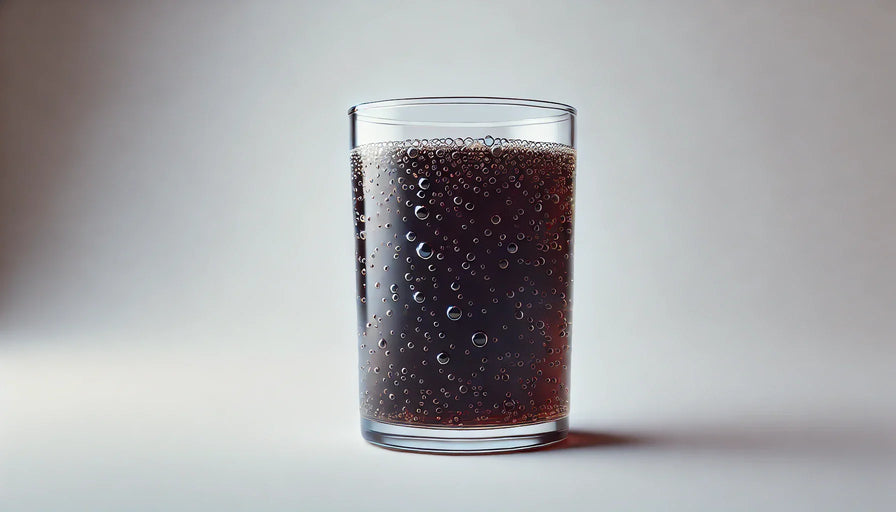
What Does Carbonation Do to Your Body?
What does carbonation do to your body? Carbonation alone typically has minimal effects; however, it can cause bloating and discomfort for some, and it may worsen acid reflux due to carbon dioxide ...
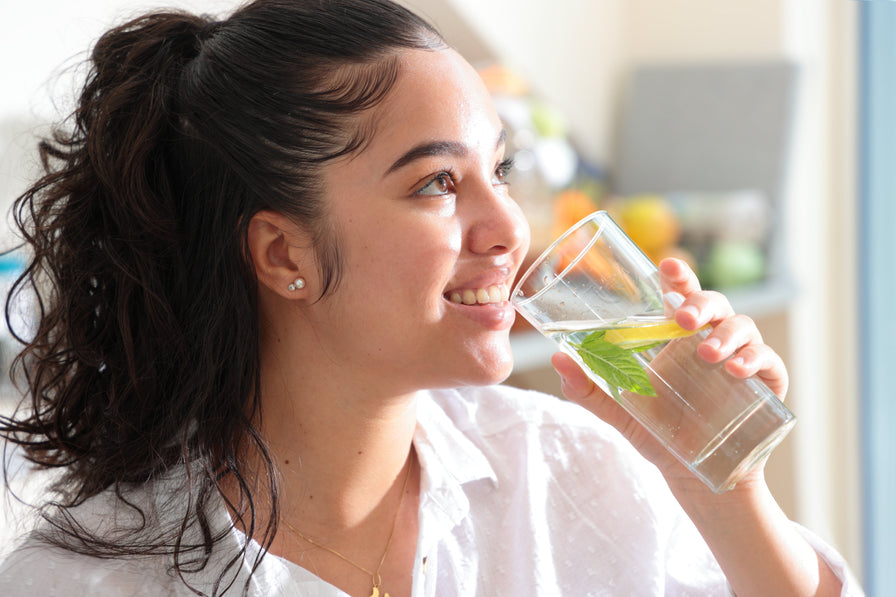
What Are the Health Benefits of Sparkling Water?
Summary Sparkling water isn't just a refreshing drink—it comes with surprising health benefits too. From aiding digestion to improving hydration, discover how sparkling water can be a healthy addi...